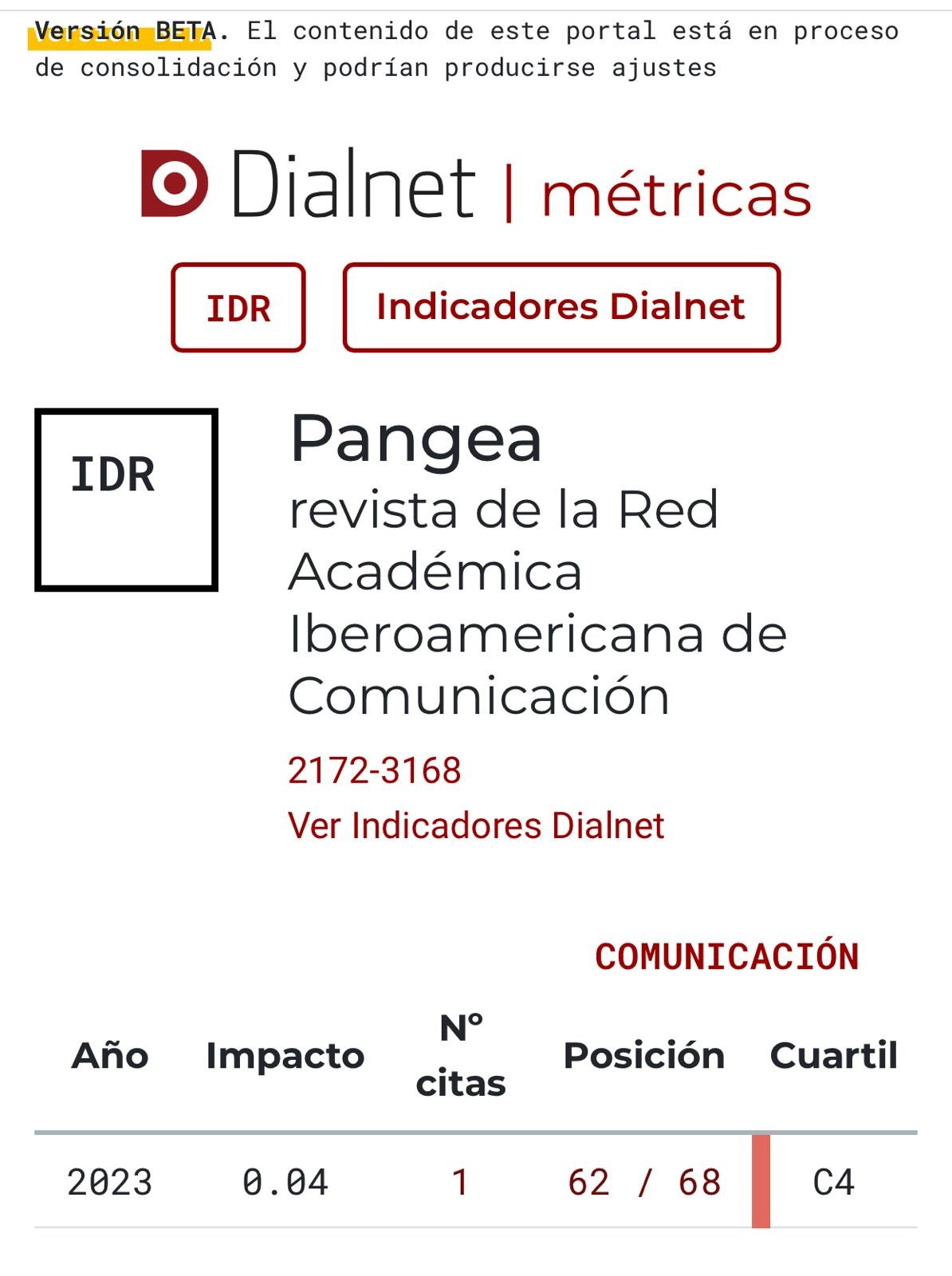Internet and territory, or when the Information Society crystallizes in inequality
DOI:
https://doi.org/10.52203/pangea.v10i1.110Keywords:
Globalization, Inequality, Information and Communication Technologies, Internet, Society of Information, TerritoryAbstract
The Information Society has been understood in many ways. The two clearest positions are divided between those who see it as a necessary tool for overcoming distance, and those who believe that space continues to be a problem, and that the gap between those who are on the side is accentuated year after year of digitization and those that are not. The hypothesis that arises is whether the Information Society crystallizes in a pre-existing inequality. For the calculations, the ICT Development Index (IDI) of the ITU, International Telecommunication Union is taken as a reference. As a result, it can be said that the Information Society crystallizes inequality. It is always the same countries that are in the best and worst positions in terms of the use and exploitation of ICTs. Thirteen countries always occupy the Top Ten, and more than 60% of those thirteen countries are European. The last three positions are always for African countries.
References
Castells, M. (2002). Tecnologías de la información y la comunicación y desarrollo global. Revista de economía mundial, núm. 7, pp. 91-107.
Castells, M. (2003). Internet, libertad y sociedad: una perspectiva analítica. Polis: Revista Latinoamericana, núm. 4, pp. 1-26.
Copus, A. (2008). Capítulo1. Marco teórico-conceptual. Nuevos factores del desarrollo territorial. [Valencia, España]: Universitat de València, pp. 31-57.
Friedman, T. (2006). La Tierra es Plana: breve historia del mundo globalizado del siglo XXI. Madrid, España: Martínez Roca.
García-Canclini, N. (2000). Industrias Culturales y globalización: procesos de desarrollo e interacción en América Latina. Estudios Internacionales, vol. 33, núm. 129, pp. 90-111.
González-Sánchez, J.A. (2003). Redes y sistemas de información (o el sueño de Prometeo sin cadenas). Cultura(s) y Cibercultur@(s). Incursiones no lineales entre complejidad y comunicación. [México DF, México]: Universidad Iberoamericana.
ITU, International Telecommunication Union (2009). “Table 4.2: ICT Development Index (IDI) (2002 and 2007)”. En Measuring the Information Society Report 2009, pp. 32. Recuperado de https://www.itu.int/en/ITU-D/Statistics/Pages/publications/mis2009.aspx
ITU, International Telecommunication Union (2010). “Table 2.2: ICT Development Index (IDI), 2008 and 2007”. En Measuring the Information Society Report 2010, pp. 24. Recuperado de https://www.itu.int/en/ITU-D/Statistics/Pages/publications/mis2010.aspx
ITU, International Telecommunication Union (2011). “Table 2.2: ICT Development Index (IDI), 2010 and 2008”. En Measuring the Information Society Report 2011, pp. 27. Recuperado de https://www.itu.int/en/ITU-D/Statistics/Pages/publications/mis2011.aspx
ITU, International Telecommunication Union (2012). “Table 2.2: ICT Development Index (IDI), 2010 and 2011”. En Measuring the Information Society Report 2012, pp. 37. Recuperado de https://www.itu.int/en/ITU-D/Statistics/Pages/publications/mis2012.aspx
ITU, International Telecommunication Union (2013). “Table 2.2: ICT Development Index (IDI), 2011 and 2012”. En Measuring the Information Society Report 2013, pp. 42. Recuperado de https://www.itu.int/en/ITU-D/Statistics/Pages/publications/mis2013.aspx
ITU, International Telecommunication Union (2014). “Table 2.2: ICT Development Index (IDI), 2012 and 2013”. En Measuring the Information Society Report 2014, pp. 60. Recuperado de https://www.itu.int/en/ITU-D/Statistics/Pages/publications/mis2014.aspx
ITU, International Telecommunication Union (2015). “Table 2.2: IDI overall rankings and ratings, 2015 and 2010”. En Measuring the Information Society Report 2015, pp. 62. Recuperado de https://www.itu.int/en/ITU-D/Statistics/Pages/publications/mis2015.aspx
ITU, International Telecommunication Union (2016). “Table 1.7: IDI value change, 2015-2016”. En Measuring the Information Society Report 2016, pp. 40. Recuperado de https://www.itu.int/en/ITU-D/Statistics/Pages/publications/mis2016.aspx
ITU, International Telecommunication Union (2017). “Table 2.2: IDI rankings and values, 2017 and 2016”. En Measuring the Information Society Report 2017, pp. 45. Recuperado de https://www.itu.int/en/ITU-D/Statistics/Pages/publications/mis2017.aspx
ITU, International Telecommunication Union (2019). The ICT Development Index (IDI): conceptual framework and methodology. Recuperado de https://www.itu.int/en/ITU-D/Statistics/Pages/publications/mis/methodology.aspx
Malecki, E. (2003). Digital development in rural areas: potentials and pitfalls. Journal of Rural Studies, vol. 19, núm. 2, pp. 201-214.
Mandiá-Rubal, S. (2019). “El Conocimiento en línea: un interesante eslabón de la apropiación tecnológica”. En Experiencias innovadoras educativas, pp. 89-112. Baja California: UABC Universidad Autónoma de Baja California.
Miguel, J.C. (2000). Industrias culturales: gratuidad y precios en Internet. ZER Revista de estudios de comunicación, vol. 5, pp. 115-150.
Robles, J.M., & Molina, O. (2007). La brecha digital: ¿una consecuencia más de las desigualdades sociales? Un análisis de caso para Andalucía. Empiria: Revista de metodología de ciencias sociales, núm. 13, pp. 81-100.
Torres-Enjuto, M.C. (2003). La geografía de la sociedad de la información: ¿real o virtual?. Boletín de la Asociación de Geógrafos Españoles, vol. 35, pp. 153-171.
Downloads
Published
Issue
Section
License
Copyright (c) 2019 Sara MANDIÁ-RUBAL

This work is licensed under a Creative Commons Attribution-NonCommercial-NoDerivatives 4.0 International License.
https://creativecommons.org/licenses/by-nc-nd/4.0/deed.es





